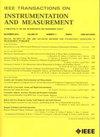Enhanced Azimuth Determination in Drilling via Piecewise Polynomial Fitting and Interpolation
IF 5.9
2区 工程技术
Q1 ENGINEERING, ELECTRICAL & ELECTRONIC
IEEE Transactions on Instrumentation and Measurement
Pub Date : 2024-10-23
DOI:10.1109/TIM.2024.3485449
引用次数: 0
Abstract
Precise geomagnetic azimuth measurement is essential for automation and intelligent operations in deep-Earth and deep-sea resource exploration. However, during drilling, the main sources of azimuth error include the inherent distortion of triaxial accelerometer and triaxial magnetometer, which requires prior calibration. To address this issue, we focus on static azimuth measurements by analyzing the error propagation relationship, developing a comprehensive error correction model, and proposing a correction method that combines piecewise polynomial fitting and improved interpolation. Finally, the proposed algorithm was experimentally validated using a high-precision inclinometer calibration platform. The experiment compared the error correction effects of the three-step combination method and the proposed method. At a confidence level of通过片断多项式拟合和插值增强钻井中的方位角测定
精确的地磁方位角测量对于深地和深海资源勘探中的自动化和智能操作至关重要。然而,在钻探过程中,方位角误差的主要来源包括三轴加速度计和三轴磁力计的固有失真,需要事先进行校准。为解决这一问题,我们重点研究了静态方位角测量,分析了误差传播关系,建立了一个全面的误差修正模型,并提出了一种将分次多项式拟合和改进插值相结合的修正方法。最后,利用高精度倾角仪校准平台对提出的算法进行了实验验证。实验比较了三步组合法和所提方法的误差修正效果。在置信度为 $p = 0.95$ 和轴向倾斜度为 $I = 0.594$ 时,dA 从 ( $3.1^\{circ }~pm ~0.9^\{circ }$ ) 下降到 ( $1. 8^{\circ }~pm ~0.9^\{circ }$ ) 。8^{\circ }~\pm ~0.5^{\circ }$ )和 ( $7\times 10^{\mathbf {-4}}~\pm ~3.7\times 10^{\mathbf {-2}}$ )。所提出的方法在方位角重建方面表现出良好的性能,满足了边钻边测系统(MWD)方位角校准的实际工程需求。
本文章由计算机程序翻译,如有差异,请以英文原文为准。
求助全文
约1分钟内获得全文
求助全文
来源期刊

IEEE Transactions on Instrumentation and Measurement
工程技术-工程:电子与电气
CiteScore
9.00
自引率
23.20%
发文量
1294
审稿时长
3.9 months
期刊介绍:
Papers are sought that address innovative solutions to the development and use of electrical and electronic instruments and equipment to measure, monitor and/or record physical phenomena for the purpose of advancing measurement science, methods, functionality and applications. The scope of these papers may encompass: (1) theory, methodology, and practice of measurement; (2) design, development and evaluation of instrumentation and measurement systems and components used in generating, acquiring, conditioning and processing signals; (3) analysis, representation, display, and preservation of the information obtained from a set of measurements; and (4) scientific and technical support to establishment and maintenance of technical standards in the field of Instrumentation and Measurement.
 求助内容:
求助内容: 应助结果提醒方式:
应助结果提醒方式:


